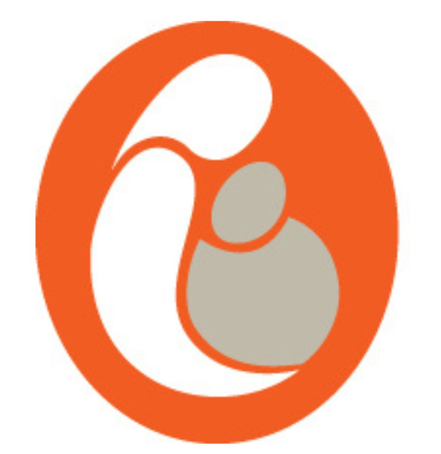NPEC Maternal and fetal classification system: definitions.
STILLBIRTH AND NEONATAL DEATHS
| Definition of terms | Subcategory |
|---|---|
| MAJOR CONGENITAL ANOMALY Any genetic or structural defect arising at conception or during embryogenesis incompatible with life or potentially treatable but causing death |
Central nervous system |
| HYPERTENSIVE DISORDERS OF PREGNANCY | Other |
| ANTEPARTUM OR INTRAPARTUM HAEMORRHAGE After 20 w gestation, whether revealed or not. If associated with PET, APH will be a secondary diagnosis. Ignore minor degrees of haemorrhage (e.g. 'shows', cervical polyps etc). Recurrent bleeding of uncertain origin followed by preterm labour should not be ignored. |
Praevia |
| MECHANICAL
|
Cord Compression Prolapse cord Cord around neck Other cord entanglement or knot Uterine Rupture Before labour During labour Mal-presentation Breech / Transverse Face/ Compound Other Shoulder dystocia |
| MATERNAL DISORDER Specify hypertensive disease present before pregnancy or any other maternal disease or condition sufficient to jeopardise the baby such as diabetes, cardiac disease etc. Infection is classified separately. |
Pre-existing hypertensive disease Diabetes Other endocrine conditions Thrombophilias Obstetric cholestasis Uterine anomalies Connective Tissue disorders Other |
| INFECTION Confirmed by microbiology / placental histology. Specify maternal infections sufficient to have compromised the baby which may be associated with congenital infection of the baby. Trans-placental transmission may have occurred such as CMV, toxoplasmosis etc. Specify only those ascending infections that are a significant factor in death. Chorioamnionitis sufficient to cause preterm birth may be specified for some neonates but evidence of fetal infection may be required as an explanation of stillbirth. |
Maternal infection Bacterial/ Viral diseases Syphilis /Group B Streptoccus Protozoa I Other Ascending infection Chorioamnionitis Other |
| SPECIFIC FETAL CONDTIONS Document only those specific conditions arising in the fetal period. |
Twin-twin transfusion |
| SPECIFIC PLACENTAL CONDITIONS |
Chorioamnionitis |
| INTRA-UTERINE GROWTH RESTRICTION DIAGNOSIS MADE |
Suspected antenatally |
| ASSOCIATED OBSTETRIC FACTORS |
Birth Trauma |
| NO ANTECEDENT OR ASSOCIATED OBSTETRIC FACTORS |
|
| UNCLASSIFIED |
|
NEONATAL DEATH ONLY
| Definition of terms | Subcategory |
|---|---|
| MAJOR CONGENITAL ANOMALY Any genetic or structural defect arising at conception or during embryoqenesis incompatible with life or potentially treatable but causing death. |
Central nervous system Cardiovascular system Respiratory system Gastro-intestinal system Musculo-skeletal system Multiple anomalies Chromosomal disorders Metabolic disorders Urinary tract Other |
| PRE-VIABLE Babies (less than 22 weeks) who are non-viable at birth because of gestation but who show signs of life. |
|
| RESPIRATORY DISORDERS Severe pulmonary immaturity will encompass those babies where structural lung immaturity is so gross as to mean ventilatory support is unsustainable at the outset. Surfactant Deficient Lung Disease may include babies with clinical or pathological evidence of hyaline membrane disease. Please note that neonatal deaths previously attributed to prematurity, would most often be captured under the subcategory of 'severe pulmonary immaturity'. |
Severe pulmonary immaturity Surfactant deficiency lung disease Pulmonary hypoplasia Meconium aspiration syndrome Primary persistent pulmonary hypertension Chronic lung disease / BPD Other (includes pulmonary haemorrhage) |
| GASTRO-INTESTINAL DISEASE Many babies with NEC will have associated sepsis which may be given as a secondary cause. |
Necrotising enterocolitis (NEC) Other |
| NEUROLOGICAL DISORDER HIE includes those babies with severe hypoxic-ischaemic brain injury before birth. If possible, please specify if HIE was primarily of intrapartum or antepartum origin. Specify periventricular leukomalacia only if this is a significant factor in the infant death. Birth Trauma will usually be classified here. |
Hypoxic-ischaemic encephalopathy (HIE) Hydrocephalus lntraventricular/Periventricular haemorrhage Other |
| INFECTION Where possible specify the location of infection and whether due to bacteria, virus, fungus or other specific organism. If infection was the main cause of death please specify whether infection is congenital (i.e. acquired ante or intrapartum acquired) or neonatal in origin. |
Generalised (sepsis) Pneumonia Meningitis Other |
| INJURY/ TRAUMA Post natal trauma only including iatrogenic injury. 'Birth Trauma' will usually be classified under neurological disorder e.g. HIE; the obstetric classification identifying the timing of the injury. |
|
| OTHER SPECIFIC CAUSES Death due to specific fetal and neonatal conditions such as isoimmunisation or unexplained hydrops. Neonatal conditions will include aspiration, unexplained pulmonary haemorrhage. |
Malignancies/Tumours Specific conditions Inborn error of metabolism |
| SUDDEN UNEXPECTED DEATHS. SIDS should conform to the accepted definition. Unascertained are those unexpected deaths that are not explained despite a full investigation including autopsy, but do not conform to the accepted definition of SIDS. |
Sudden Infant Death Syndrome (SIDS) Infant deaths - cause unascertained |
| UNCLASSIFIED Cases where little or nothing is known about the pregnancy or delivery and which cannot be fitted into any of the above categories. Please use this category as sparingly as possible. |


